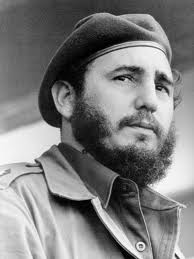An Adventure into the History of the Cuban Economy
Introduction
Recently, I've been reading about Cuba and its developments since news about its newfounded high economic growth has been making headlines. Now, I shall share as much as I know about its economic history and growth.
The Discovery of Cuba and Spanish Rule

Cuba is a land of natural beauty and bounty. It was one of the first places of the Americas discovered by Christopher Columbus. Since its discovery in 1492, it was ruled by Spain till 1898, after which four years of American administration took place, before its independence in 1902.
The reasons for which Spain ruled Cuba for almost 498 years are simple. Cuba has very fertile soil and an excellent climate for the cultivation of many types of cash and food crops. It was and is especially excellent for the cultivation of sugar. Sugar was extremely expensive in Europe during the 1500s and 1600s.
Thus, Cuba helped to make Spain rich by being the world's largest sugar and rum producer. Even now, Cuba is the 'Sugar Bowl of the World'; it produces nearly 75% of the world's total amount of sugar. Also, it produced and produces large amounts of bananas, yams, tobacco, rice, citrus fruits, cassava, and coconuts. It even has rich nickel deposits.
The Domination of the Cuban Economy by American Companies

In the years from 1908 to 1959, the Cuban economy was dominated by American companies who used and owned many of Cuba's natural resources and plantations. The banks and the country's entire financial system, all electric power production, and most industry was dominated by US capital. US monopolies owned 25 percent of the best land in Cuba, and more than 80 percent of all farm lands were occupied by sugar and livestock-raising latifundia. 90 percent of the country's raw sugar and tobacco exports was sent to the USA. All oil refining was done by American oil companies.
This near monopoly of American companies over Cuban resources was at its peak from 1952-1959, when dictator-president Fulgencio Batista signed numerous contracts allowing US companies to operate on Cuba. He even signed many deals with mafias for letting them own and utilize the country's resources for their own profit. During this period, mafias, rampant government corruption, bribery, and disparity between the poor and the rich rapidly grew.
The Bacardi Building Sugarcane Plantation in Cuba
The Arrival of Fidel Castro and Subsequent Communist Rule
Fidel Castro
Then came Fidel Castro. Originally a lawyer, he was a pro-communist Cuban revolutionary who, with the help of thousands of Cuban farmers and other impoverished classes volunteers, ousted Batista on New Year's Day, 1959. Over the years from 1956 to 1959, he and his many volunteers captured some prominent towns and cities like Santa Clara, Cienfuegos, and Santiago de Cuba. After that, relations between the US and Cuba rapidly crumbled and totally broke off in 1962.
Since then, Cuba became a strong ally of the U.S.S.R. (Soviet Union), which, from 1962 to 1989, provided Cuba with massive amounts of aid, technological assistance, heavy subsidies on crude oil and coal, and military support. Also, Cuba, as with most other communist countries, established a rigid, iron-handed centrally planned economy where all businesses and property, including street vendors, were nationalized. From now on, the government controlled all aspects of business. Now, almost no foreign company could operate in Cuba (and existing ones were ousted) and no Cuban could establish their own business. The Cuban economy rapidly grew.
Decline in the Economy and Subsequent Rapid Growth
After nearly three decades of heavy subsidies and aid, the U.S.S.R. came to an end in 1991 and like most of its allies, Cuba's economy quickly dwindled and as aid was running out, incomes became stagnant, the price of food rose, and soon, hundreds of thousands of Cubans had to eat whatever they could find, even Havana Zoo's many animals. Trade rapidly dwindled and the Cuban Peso devalued to an all time low of 121 pesos to 1 US Dollar. Infrastructure degraded, buildings and facilities became dilapidated, and the country was facing bankruptcy.


However, after nearly two decades of economic stagnation, Cuba's economy is experiencing high growth rates. The GDP of the country is increasing at an average rate of 8% per year.Large numbers of tourists are visiting the country these days, thereby increasing the country's foreign exchange. After the partial liberalization of the economy by the recent reforms, the market economy is reappearing in the country and now, anybody can open up a small private business of their own. Nowadays, many foreign brands, including western brands, are also showcasing their products at the country's shopping malls (although most Cubans can't afford their products, though the number of buyers is increasing). Also, new hotels are being built to accomodate the burgeoning number of tourists. The amount of the country's exports has also risen. Thus, Cuba is again experiencing a new period of economic success.
 "Heart and Soul" is a song that was composed by the then very famous composer Hoagey Carmichael in 1938. This song was made at the zenith of the Big Band Era, where bands of seventeen or more musicians would play cornets, tubas, trumpets, pianos, etc. It comes in both instrumental and vocal versions. Since its inception in 1938, it has been sung and played in many versions and by many other famous bands like the Cleftones.
"Heart and Soul" is a song that was composed by the then very famous composer Hoagey Carmichael in 1938. This song was made at the zenith of the Big Band Era, where bands of seventeen or more musicians would play cornets, tubas, trumpets, pianos, etc. It comes in both instrumental and vocal versions. Since its inception in 1938, it has been sung and played in many versions and by many other famous bands like the Cleftones.









